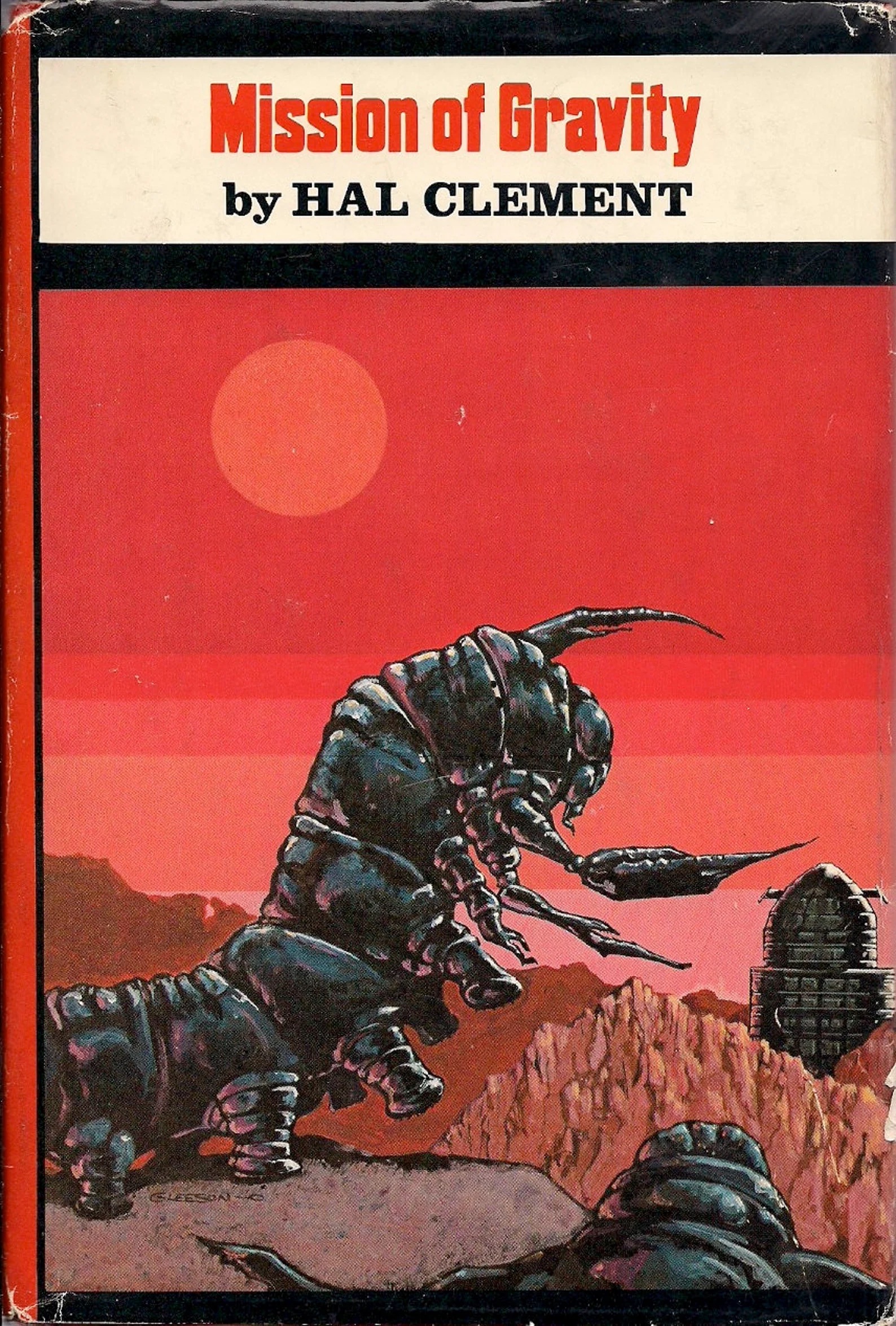Mission of Gravity

Review
Mission of Gravity is a sci-fi adventure story set on the planet Mesklin—a massive, rapidly rotating world with gravity much higher than Earth’s. It follows Barlennan, a Mesklinite, as he sails the Bree across the planet in search of a lost human rocket ship.
Mission of Gravity is primarily story-driven. Barlennan, a centipede-like alien, and his crew journey to unknown parts of Mesklin on their ship, the Bree, coming across strange inhabitants as they seek to rescue the humans’ rocket stranded at the pole. The main appeal of the book lies in observing how the Mesklinites interact with new tribes and navigate these situations through a combination of human knowledge and Mesklinite cunning. Some memorable encounters include:
-
Gigantic builders who construct cities as traps to snare even larger predators.
-
Primitive canoe-building Mesklinites who capture the crew but release them after being tricked into believing the radio is a god.
-
Island-dwelling Mesklinites who have developed gliders in the lower-gravity equatorial region and attempt to impound the Bree and its crew as suspected spies.
The adventures are fun, but don’t really come together into a greater whole. Mission of Gravity never really builds any tension because you know Barlennan is going to succeed, so each conflict feels more like a delay than a significant plot development. There is a hint that Barlennan has a secret motive for helping the humans, but at the end it is exactly what it appeared to be: he wants to advance Mesklinite technology by studying the human rocket. But the impact of this reveal is blunted because, through his journey, Barlennan realizes that:
-
He won’t be able to understand the technology.
-
The humans would willingly share anyway.
Mission of Gravity is said to have inspired ’s Cheela series: Dragon’s Egg and Starquake. While both explore life under immense gravity, takes the concept further.
He introduces much stronger gravity, essentially creating a 2D civilization; incorporates strong magnetic fields that significantly impact the Cheela’s evolution and experience; and covers a broader narrative, from the discovery of agriculture to space travel, due to the fact that the Cheela experience the universe one million times faster than humans. While Mission of Gravity felt like Earth with a twist, the neutron star in the Cheela series was a completely alien world.
Part of the fun of reading old sci-fi is seeing what technology an author mispredicts; I pointed out a few cases before, for example in my review of Eater. But Mission of Gravity does a particularly bad job. The central conflict only exists because wireless data transmission is nearly impossible in the story’s setting. Characters can travel the stars but use slide rules for calculation—the electric calculator was invented just 8 years after the book was published! They can’t create digital maps, instead manually pasting together hard-copy photographs from orbit. The novel’s world is analog while our actual future is digital.
I think the wrong technology really stands out in Mission of Gravity because it is so narrowly focused on the day-to-day life of Barlennan and his crew. Childhood’s End, written around the same time, also makes several wrong predictions, but its broader focus on humanity’s fate makes these easier to overlook.
Mission of Gravity was good but not great. Perhaps I would have found it more groundbreaking had I read it before the Dragon’s Egg and Starquake, but in comparison, it felt underwhelming. I plan to read Star Light, the next book in the series, but I don’t expect much of it.